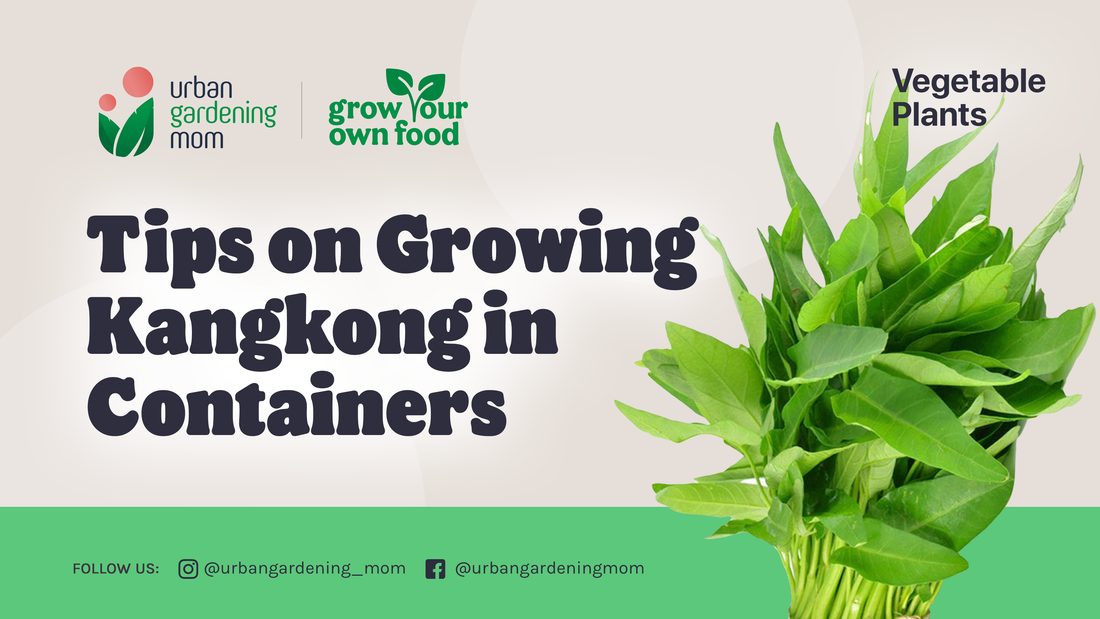
Tips on Growing Kangkong in Containers
Share
Kangkong is the only vegetable that I really enjoyed eating ever since I was a child. This leafy vegetable has become a mainstay in my weekly grocery list. The plant grows anywhere, especially in swampy areas, which makes me often wonder where they get those kangkong leaves that I buy in the grocery. Therefore I decided to grow my own kangkong so I need not worry about how these leaves are being sourced.
Kangkong is also known by other names, such as water spinach, swamp cabbage or Chinese watercress. It is very common in Southeast Asian cuisine, because kangkong thrives well in the hot and humid tropical climates.
To Propagate Kangkong
Propagate kangkong easily from seeds or through stem cuttings. Sow the seeds in a seed tray or directly into a medium sized container pot. Make sure to allow a minimum of 3- inches of distance in between the seeds. They germinate quite easily in a matter of days. In a few more days, transfer the seedlings to a sunny spot outside.
Kangkong can also be propagated from cuttings. Choose a healthy bundle of kangkong leaves when you buy at the market. Use the leaves for cooking but leave the top 6-inch portion, up to the 4th leaf node. Soak the lower end of the cuttings in water for a week, and change the water every couple of days. Transplant the cuttings to the ground or a container filled with rich loamy soil, as soon as the roots appear.
Using a Container to Grow Kangkong
When planting in a container, use a rich loamy soil mixed with compost. Choose a container with at least 12 inches in depth and diameter. The plant can grow well in partial or full sun, but at least 4 hours of sunlight is ideal for it to grow more leaves. Keep the soil moist by regular watering. Water deeply to ensure the deepest roots are reached. Daily watering is needed during the hot and dry summer months.
Harvesting the leaves
With enough sunlight, the leaves can be harvested in as early as 60 days from sowing. To harvest, cut the top leaves leaving up to 2 leaf nodes from the roots. New stems will grow from these leaf nodes in just a few days. In about 2-3 weeks, the new stems will be ready for another round harvest.
When grown in containers, the soil nutrients get depleted easily. Fertilize with compost or organic fertilizers every 3 months to ensure a continuous healthy growth of new stems and leaves. This also gives the plants stronger resistance to common diseases and pests.
Pest Control
Kangkong is prone to common pests, like the stink bugs, locusts and and spider mites. To address this, spray an organic pest solution at least once a month. Make sure to spray the solution before dawn or after dusk, in order not to scorch the leaves from the sun exposure.
Visit http://www.urbangardeningmom.com to learn more tips on growing vegetables and herbs.


5 comments
Planting a Kang kong is fun. How Long does it take for a Kang long to fully develop
Planting a Kang kong is fun. How Long does it take for a Kang long to fully develop
Can chives and kangkong be planted together in a container or near each other? Thanks
Will give it a try… Hipefully they wint become leggy seedlings, and will grow strong
my kangkong is on 2nd week and started to develop long weak stems :( i followed the instructions carefully but when I first brought it out for sunlight, it all started to wither :(